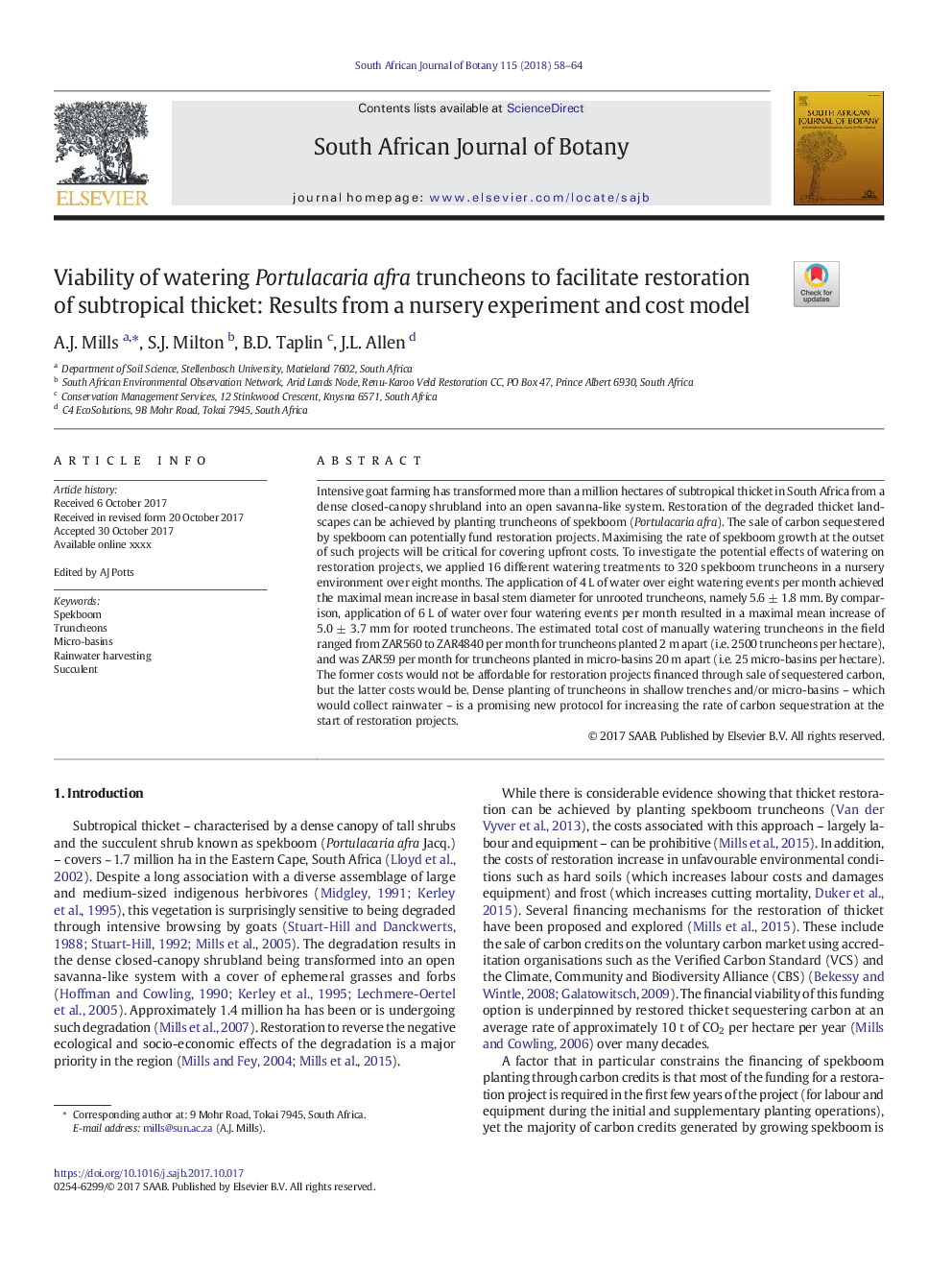| Article ID | Journal | Published Year | Pages | File Type |
|---|---|---|---|---|
| 8882329 | South African Journal of Botany | 2018 | 7 Pages |
Abstract
Intensive goat farming has transformed more than a million hectares of subtropical thicket in South Africa from a dense closed-canopy shrubland into an open savanna-like system. Restoration of the degraded thicket landscapes can be achieved by planting truncheons of spekboom (Portulacaria afra). The sale of carbon sequestered by spekboom can potentially fund restoration projects. Maximising the rate of spekboom growth at the outset of such projects will be critical for covering upfront costs. To investigate the potential effects of watering on restoration projects, we applied 16 different watering treatments to 320 spekboom truncheons in a nursery environment over eight months. The application of 4 L of water over eight watering events per month achieved the maximal mean increase in basal stem diameter for unrooted truncheons, namely 5.6 ± 1.8 mm. By comparison, application of 6 L of water over four watering events per month resulted in a maximal mean increase of 5.0 ± 3.7 mm for rooted truncheons. The estimated total cost of manually watering truncheons in the field ranged from ZAR560 to ZAR4840 per month for truncheons planted 2 m apart (i.e. 2500 truncheons per hectare), and was ZAR59 per month for truncheons planted in micro-basins 20 m apart (i.e. 25 micro-basins per hectare). The former costs would not be affordable for restoration projects financed through sale of sequestered carbon, but the latter costs would be. Dense planting of truncheons in shallow trenches and/or micro-basins - which would collect rainwater - is a promising new protocol for increasing the rate of carbon sequestration at the start of restoration projects.
Keywords
Related Topics
Life Sciences
Agricultural and Biological Sciences
Agronomy and Crop Science
Authors
A.J. Mills, S.J. Milton, B.D. Taplin, J.L. Allen,
